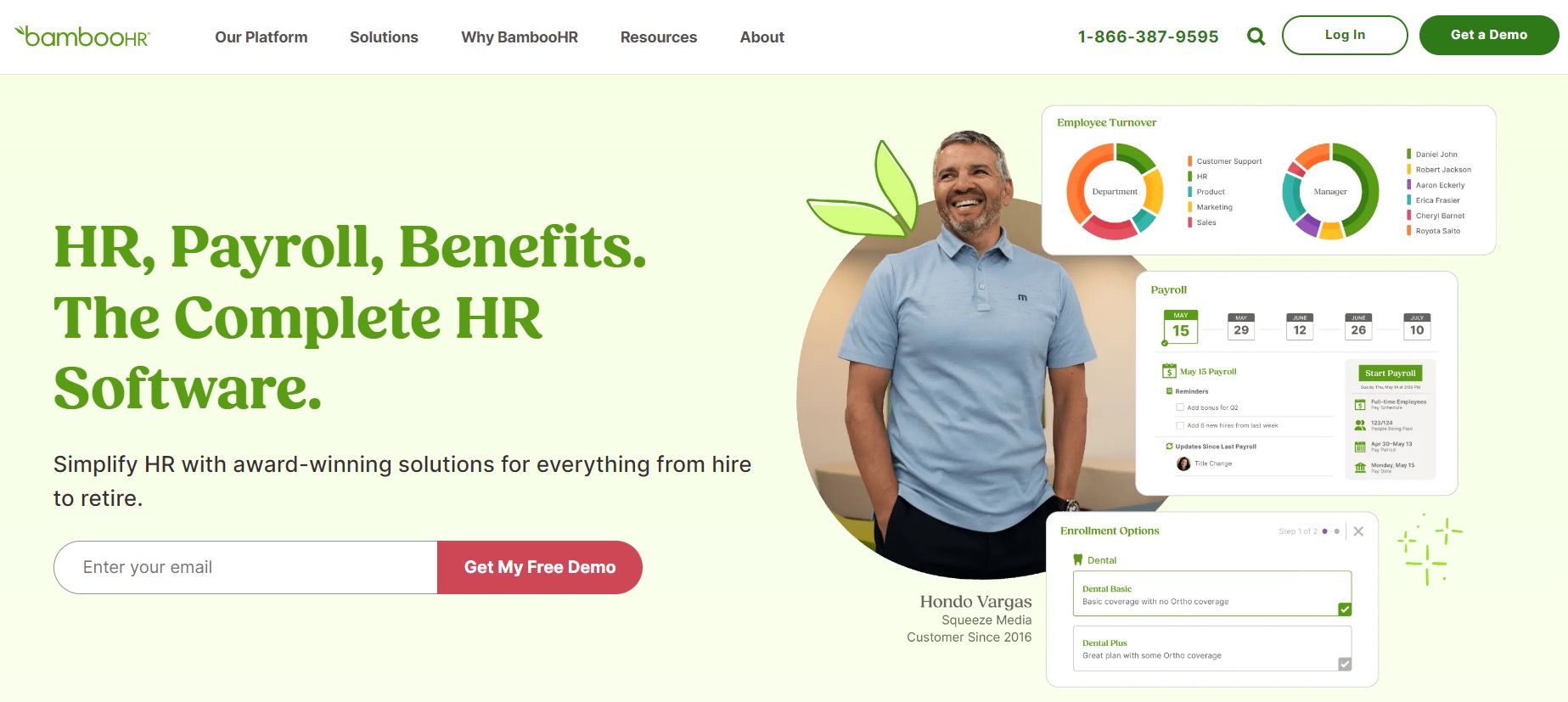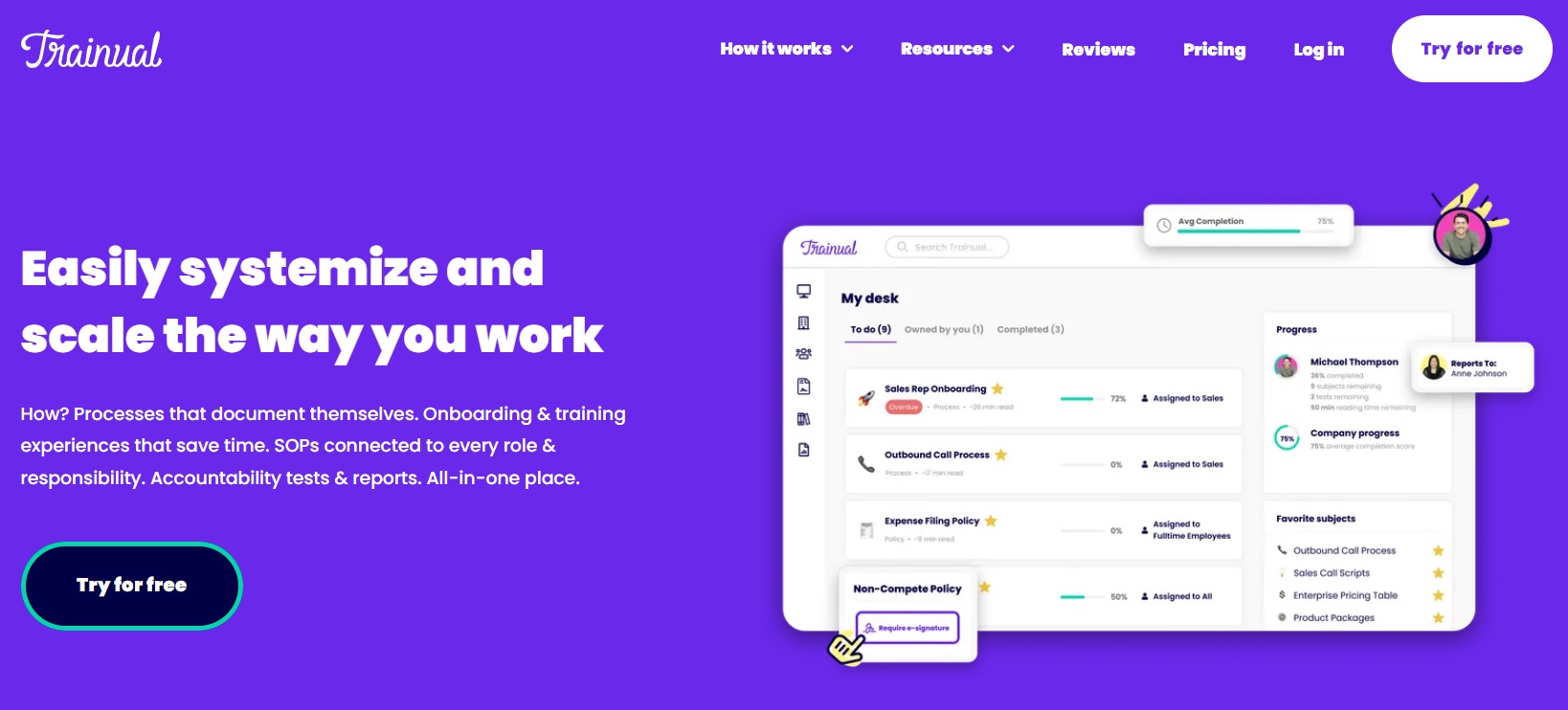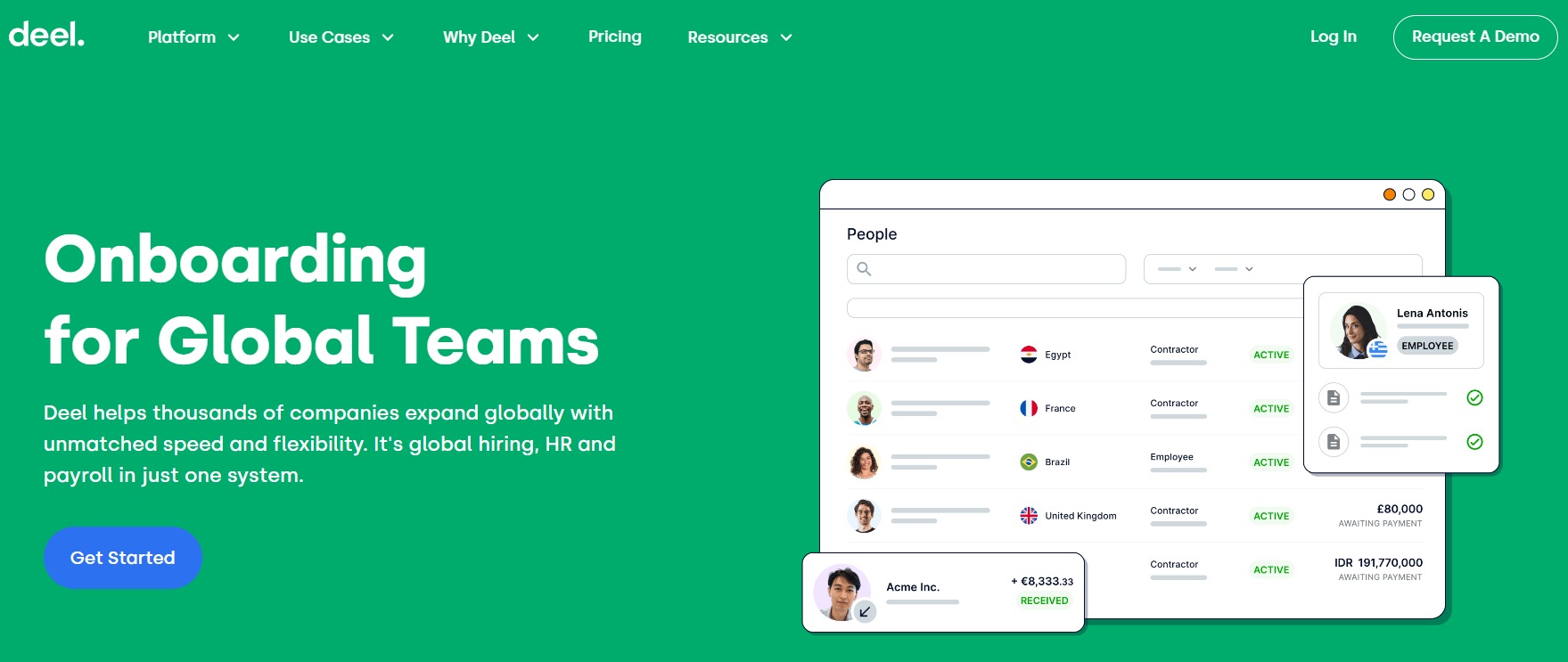Employee onboarding software: A guide for HR professionals looking to improve staff experience
Onboarding is an employee’s first impression of your company.
It’s their first time meeting colleagues, working in your system, and performing their tasks. If hiring processes are slow and inefficient, new hires are bound to think that it’s business as usual at your organization.
Further, outdated onboarding processes don’t have solid ways to capture and analyze data, making it difficult to improve your practices.
Employee onboarding software is an essential piece of HR technology that has shifted from nice-to-have to business-critical in only a few short years.
These tools organize your HR processes to provide a better employee experience, enabling you to gather vital data and new hires to get started on the right foot, increasing overall employee engagement and retention.
This blog post discusses the benefits of using employee onboarding platforms and how to take advantage of them. We also list our top software choices to help you make a decision.
Table of contents
- What is employee onboarding software?
- The benefits of employee onboarding software
- 5 best employee onboarding software compared
- 4 best practices for leveraging employee onboarding software in your HR department
- 3 examples of companies succeeding with new hire onboarding software
- Transform outdated inductions with employee onboarding software
- Employee onboarding software FAQs
What is employee onboarding software?
Employee onboarding software is a tool that improves the process of welcoming and integrating new employees. It streamlines and organizes essential onboarding processes, such as form collection, communication, and progress tracking.
The best employee onboarding software solutions must optimize and improve the employee onboarding process from multiple perspectives.
This software helps HR managers organize, streamline, and automate tasks, such as collecting legal documents and sending out onboarding packages, improving consistency and productivity.
From an employee perspective, employee onboarding tools help integrate into a company by processing documents quickly, helping them create profiles, and communicating with teammates. A process like this tells new hires they made the right decision in choosing your company.
An employee onboarding platform can have many different features. The most basic functionality includes hiring features like seamless integration with recruiting platforms and data management like handling salary and benefits.
Depending on your needs, these systems can also have many optional onboarding features, including mobile responsiveness, learning leaderboards, and even offboarding software functionality.
The benefits of employee onboarding software
HR onboarding software automates tedious, manual tasks, saving time and effort. On top of that, it provides a seamless experience for new employees, setting them up for success.
The right technology improves the beginning of the employee journey, which is crucial for workers and managers.
1. Increases efficiency
Onboarding is a complicated process with many steps. Even adding one new employee means creating a new profile, processing legal documents, and issuing an onboarding package.
Employee onboarding platforms offer intuitive dashboards that help you monitor progress and performance and give you easy access to your onboarding checklist.
Further, the new hire onboarding software automation helps you tackle this overwhelming process. Unsurprisingly, 63% of HR professionals use AI and automation to increase efficiency. The more tasks you automate, the more time you can spend building relationships.
It is arguably the best use of AI in HR. Any time you leave tedious or complicated tasks to software, you free up your time, mitigate risks, reduce errors, and increase process consistency.
2. Facilitates consistency and compliance
Inconsistency affects your hiring managers, causing harmful bottlenecks and wasting time. It’s also one of the fastest ways to confuse or upset a new employee.
However, when companies use a consistent onboarding process, employee productivity increases by 54%.[1]
Employee onboarding software contributes consistency in several ways, such as tool integration, task automation, and centralizing employee data.
This software furthers consistency through solid compliance management. Creating a single source for employee handbooks and organizational policies ensures you can efficiently send workers updated company resources.
3. Enhances employee experience
Employees must see that their new employer is organized, efficient, and informative.
It’s essential to make a powerful impact on new hires – 30% of workers leave a job within the first 90 days, and 35% of those people say the reason was a poor experience.
However, the best onboarding tools give your workforce a solid start to a long, satisfying employee journey.
Organizations with strong onboarding software and practices see new employee retention rates improve by 82% and productivity by more than 70%.[2]
Interested in a deep dive into this topic? Read our guide on how the onboarding process increases employee retention.
4. Improve processes with analytics
Without data visibility, you don’t know how effective and productive your onboarding process is. It’s also challenging to interpret your data without tools to help you analyze and report the information.
Employee onboarding software enables you to harness useful analytics and improve your processes.
For example, you could track employee progress through an integrated performance management system to discover how fast new hires are ramping up.
You can then analyze and use this data to inform your onboarding practices. Depending on the software, you can also use AI predictive analytics to make actionable recommendations on what to do.
Experts recommend taking advantage of analytics to reduce costs and make strategic decisions.[3]
Read more on this topic in our article about HR analytics software.
Integrates with your wider HR tech stack
The best HR onboarding software offers third-party integrations to streamline your automated workflows.
Seamless integration with your HR tech stack helps you create a single source of truth with less running around.
Employees spend an average of 3.6 hours per day searching for information, so 31% of people feel burnt out, and 16% consider leaving their companies.
Nearly 60% of workers blame this exhausting search on having too many sources of information.
Centralizing your company information and enabling employees to easily jump from one program to another helps new hires ramp up quickly and increases satisfaction.
Integration benefits your workforce and your HR management. For example, many onboarding systems integrate with HR dashboards to give you instant access to crucial workforce metrics.
The best insights on HR and recruitment, delivered to your inbox.
Biweekly updates. No spam. Unsubscribe any time.
5 best employee onboarding software compared
We want you to start optimizing your onboarding workflows and processes as soon as possible, but which tool should you choose? Free employee onboarding software or paid? Do you need a global solution?
Here’s our comprehensive list of recommendations, including pricing, top features, and pros and cons, so you can make an informed decision.
Factors we considered
Here’s a quick overview of the points we considered when choosing this software:
Integration capabilities: Effective onboarding software should be able to connect to various HR software, including hiring and payroll tools, and your human resources information system (HRIS)
Customization and personalization: Customization features are crucial, including learner dashboard personalization and white-labeling
Automation capabilities: HR automation enables you to automate onboarding packages and enter employee data into your systems
Data and analytics: Onboarding software should give you deep insights into your processes so you can make actionable improvements
User-friendly interface: A simple interface for employees and HR teams makes onboarding more intuitive and smooth
Top HR onboarding software: A summary
Software | Top features |
1. BambooHR | - Robust, all-in-one tool - Offers an applicant tracking system - User friendly |
2. Trainual | - Provides a central knowledge database - Enables you to provide employees with engaging videos and quizzes - Offers easy access to handbooks, policies, and manuals |
3. Deel | - Facilitates global hiring in 150 countries - Streamlines contractor onboarding and classification - Helps manage international employee visas |
4. Grove HR | - An affordable solution for startups and small businesses - Streamlined automation - Intuitive employee self-service features |
5. Trinet HR Platform (formerly Zenefits) | - Solid compliance assistance - Tax filing in all 50 US states - Detailed payroll software as an add-on |
BambooHR: Best overall
BambooHR is a powerful all-in-one HR platform for managing payroll, benefits, and onboarding.
This software enables you to quickly and easily collect electronic signatures, complete paperwork, and finish IT work so you can focus on building relationships and making meaningful introductions.
BambooHR has its own applicant tracking system, performance management system, and employee wellbeing software, making it an efficient, holistic platform.
Pros | Cons |
- User-friendly notifications - Great customer service - Integrated ATS that streamlines recruitment to onboarding - Payroll management - E-signatures - Good customer support | - Limitations in customization - Updates can sometimes delay work processes |
Rating: 4.5 out of five (G2)
Pricing at time of writing: Starts at $5.25 per employee per month
Trainual: Best for building a knowledge base
Trainual is knowledge management software that helps you build a cohesive company database.
Knowledge management software is a simple but effective tool and a rising HR technology trend.
This software enables you to create a centralized information hub for your new hires, including handbooks, company policies, training manuals, and operating procedures. It also helps you take advantage of gamification in HR by engaging workers with videos and quizzes.
Pros | Cons |
- Simple and clean interactive interface - Centralized location for handbooks and policies - Excellent third-party integrations - Premade onboarding templates to get you started | - Starting seat limits are quite low, at 10 and 20, before upgrading - Due dates restricted to pro users |
Rating: 4.7 out of five (G2)
Pricing at time of writing: Starts at $250 per month
Deel: Best for global and flexible workforces
Deel is HR software for distributed workforces, including global and flexible teams. It also specializes in helping companies expand globally.
This remote working technology enables you to handle typical onboarding tasks, such as managing pay, but it also offers solutions for handling international employees’ visas and contractor classifications.
Deel supports onboarding and hiring for 150 countries, enabling you to scale your international business efficiently no matter where your hires are from.
Pros | Cons |
- Easy to navigate and simple interface - Payroll and benefits management - Built for global and distributed workforces - Powerful automation - Manages global compliance | - Inconsistent customer service - Not enough payment options |
Rating: 4.7 out of five (G2)
Pricing at time of writing: Starts at $49 per contractor per month
Grove HR: Best for startups
Grove HR is excellent free employee onboarding software that is ideal for small businesses and startups.
This tool offers payroll and performance management, smooth automation, and attendance tracking. It also considers the employees’ point of view, facilitating time-off requests and data access.
Startups may not have the budget for a complete HR solution but still need the features it provides. Grove HR is the perfect fit because it provides all the features a new company needs and offers an affordable first tier.
Pros | Cons |
- Simple and clean interface - Responsive on mobile - Easy progress tracking - Excellent self-service features | - Limitations in customization - Complicated payroll system |
Rating: 4.5 out of five (G2)
Pricing at time of writing: Free plan, then it starts at $3 for one employee for one year
Trinet HR Platform (formerly Zenefits): Best for taxes and compliance
Trinet HR Platform is a top-notch tool for managing taxes and compliance
This software provides tax filing support in all 50 US states.
Further, it provides dedicated compliance assistance in all pricing plans, helping companies access the latest information on federal compliance deadlines for benefits and payroll.
Trinet HR Platform also has robust payroll software available as an add-on.
Pros | Cons |
- Payroll and benefits management - Easy tax filing in every pricing structure - Compliance assistant tool - Self-service features - Centralized data management | - Lacks learning and training management functions - Requires a minimum of five employees for every pricing structure |
Rating: 4.2 out of five (G2)
Pricing at time of writing: Available upon request
4 best practices for leveraging employee onboarding software in your HR department
Employee onboarding apps streamline your processes and create a solid foundation for an excellent employer-employee relationship.
But before you jump in, check out our top onboarding best practices so you can harness your software’s full potential.
Employee onboarding platform strategies: A summary
Strategy | What it accomplishes |
1. Define and validate a transparent onboarding process | Enables you to set up your onboarding software efficiently and effectively and communicates expectations to new hires |
2. Make user experience a priority | Helps HR and new team members manage their experiences smoothly and reduces frustration through personalization |
3. Provide extensive training to your team on how to use your software | Helps streamline processes and makes it simple for HR to brush up on key knowledge |
4. Create a powerful onboarding process with talent assessments | Matches employees to suitable roles and designs targeted development plans |
1. Define and validate a transparent onboarding process
Even the best onboarding software can’t do everything itself, so defining a solid process first is critical.
Create your onboarding process, define the purpose of each step from day one, and double-check it with your whole team. Ask for feedback and refine it until everyone is satisfied.
After this, build your process into your new employee onboarding software.
Ensure your new hires know your processes, which order they go in, and your expectations.
Use your tools to send out:
Automated messages that describe processes
Onboarding schedules
Clear expectations
Most employee onboarding platforms facilitate this by enabling you to send onboarding packets that contain all this information automatically.
Want to dive deeper into employee onboarding?
Read our complete guide. It’s packed with tips, step-by-step strategies, and industry insights —to build a seamless employee onboarding plan.
2. Make user experience a priority
A simple, positive user experience is the number one thing that employees appreciate and helps make the first days and weeks that much better.
Ease-of-use also helps HR streamline their work and help employees get started.
Even if a tool offers dozens of amazing features, it doesn’t help if you and your employees can’t easily use it.
Here are a few features to prioritize:
Ease of navigation
Simple interface
Third-party integrations like Slack
Detailed customization
Personalization plays a more profound role in a great user experience than you may think.
For example, software with rigid timekeeping presets could reduce the experience for Australian employees, where the average working day is seven and a half hours instead of eight.
3. Provide extensive training to your team on how to use your software
Even easy-to-use HR onboarding software has some type of learning curve.
Train your HR team on using your new tools, from inputting new employee data to issuing pay and sending onboarding packets.
Your HR team needs to know how to use your software for their benefit and for new hires.
New employees look to you for guidance, and you wouldn’t want to continually answer with “I’m not sure.”
It may sound funny, but you can train your team on new tools using other tools. For example, you can use a knowledge database like Trainual to hold a variety of handbooks on how to use BambooHR.
Learning management systems can also help accomplish this best practice.
These systems enable you to actively deliver training to your team members and give them a hub where they can access information whenever they need to brush up on something.
4. Create a powerful onboarding process with talent assessments
Talent assessments are tech that accurately and objectively gauges a person’s skills and competencies. You can use these valuable tools in many ways to improve onboarding.
The hiring process with talent assessments gives you detailed data on their capabilities, enabling you to place them into suitable roles and giving them a leg up while onboarding because they have the right skills for the position.
These assessments also give insights into new hires’ strengths and learning agility, helping you tailor their onboarding.
Talent assessments also help you get started right away with employee development.
For example, you hire a great customer service representative who needs improvement in problem-solving skills. As they start onboarding, you can build them a development plan to accelerate their performance.
For more insights on this subject, check out our article on candidate assessment software.
3 examples of companies succeeding with new hire onboarding software
The best onboarding tools enhance employee induction and build solid future relationships, but let’s see them in action.
Here are three real-life companies improving their onboarding programs with onboarding software:
Lucid
Moncord
Finder
Lucid
Lucid, a visual collaboration suite, decided to invest in onboarding software to keep ahead of the competition.
With its new onboarding software, Lucid was able to automatically walk new hires through every essential document, so none slipped through the cracks.
It was a lifesaver because this company has about 30 required onboarding documents.
This tool helped Lucid get all of the tedious, complicated paperwork out of the way so its team could focus on building great relationships with new hires. Further, its centralized employee data helped the company continue its ongoing mission to scale and grow.
Kat, one of its HR team members, had this to say:
“When we first went digital with our onboarding process about four years ago, it saved our onboarding team several hours per onboarding group. And as we've continued to grow, the time savings have gotten bigger and bigger.
These achievements are measurable. Lucid maintains a 98.9% satisfaction rate for its onboarding processes.
Moncord
Moncord, a real estate professional services company, struggled with slow, tedious processes.
It used to manually handle all training, need-to-knows, and best practices – either through documents, phone calls, or even hand-written notes.
As it scaled, it switched to storing this information in Dropbox, which worked for a short time, but the team soon realized it needed a better system because ramping up new hires took six months when it should have taken two.
Alex and Lisa Mont-Ros, Moncord’s founders, discovered they needed more than just data storage – they needed a knowledge database to share and scale their knowledge.
Alex and Lisa adopted Trainual and started seeing benefits soon after. They asked all their employees to review the tool and give honest feedback to expand on the software and make it fit for them.
Moncord now uses this HR onboarding software to distribute training videos, documents, and quizzes to its employees.
With this new process, new hires are fully productive in as little as 30 days.
This system also freed up time. Training isn’t entirely on the founders’ shoulders, thanks to employee self-service features.
Finder
Finder, a financial comparison site, emphasizes flexible and global hiring.
This company strategically recruits employees from different regions to expand its market reach and knowledge, which makes compliance and labor laws tricky to juggle.
Finder needed a strong employee onboarding platform to handle these delicate matters and manage the admin workload.
It discovered HR onboarding software that enabled them to hire and manage employees in more than 10 countries with a 100% compliance rate and still save admin time. The software also helps them answer complicated questions, such as describing Australian tax regulations to employees in the Netherlands.
Here are a few more highlights:
Saved more than four days per month on HR admin processes
Reduced onboarding time by 50%
Maintained 100% hiring compliance
Transform outdated inductions with employee onboarding software
Updated, streamlined onboarding helps your HR team manage its workload and increase efficiency. On top of that, it shows employees that choosing your organization was the right decision.
Use employee onboarding software with our strategies, like prioritizing user experience and taking advantage of talent assessments, to build an employee experience like no other.
To learn how to improve the entire employee lifecycle, from onboarding to offboarding, read our guide on choosing employee experience software.
Ready to improve your onboarding process and incorporate TestGorilla talent assessments into your new hire’s experience?
Then watch a live demo or jump straight in and sign up for a free account today!
Employee onboarding software FAQs
Let’s wrap up this article by answering a few common questions.
What should you look for in employee onboarding software?
The top features in employee onboarding software are automation, document storage and delivery, ease of use, customization, and analytics.
It’s important to consider your organization specifically and whether it needs anything unique.
For example, if your company hires globally, you want a solution that helps manage international visas.
What are the four phases of onboarding?
There are four phases of onboarding. The first is preboarding, followed by orientation, training, and integration. Here’s a quick summary:
Preboarding: Introducing employees to their roles and company policies
Orientation: Helping employees transition into work
Training: Supporting employees with customizable modules as they learn their responsibilities
Integration: Moving employees into the team and fully adapting them to the company
What should an onboarding process look like?
Employee onboarding should contain necessary steps, such as legal documents, policies, and manuals.
However, the onboarding process should also reflect your company's culture and values.
Employee onboarding software is critical because your team can focus on injecting your culture into onboarding when these tools handle the necessary steps.
How can you onboard a new hire remotely?
You can onboard new hires 100% remotely. The right software is pivotal, and it’s also essential to adopt a remote mindset and prioritize clear communication during an employee’s first weeks. Talent assessments paired with background checks also help you ensure that you’re hiring and onboarding employees with the right skills and motivation to succeed in a remote position.
For our deep dive into the subject, read our full guide to virtual onboarding.
Sources
"Employee Onboarding Statistics 2024". (2024). EMP Trust HR. Retrieved January 26, 2024. https://www.emptrust.com/infographics/employee-onboarding-statistics-2024/
"The True Cost of a Bad Hire". (2015). Brandon Hall Group. Retrieved January 26, 2024. https://b2b-assets.glassdoor.com/the-true-cost-of-a-bad-hire.pdf
Boudreau, John W. (June 26, 2017). "Leveraging HR Analytics in Strategic Decisions". Harvard Business Review. Retrieved January 26, 2024. https://hbr.org/webinar/2017/06/leveraging-hr-analytics-in-strategic-decisions
You've scrolled this far
Why not try TestGorilla for free, and see what happens when you put skills first.


















